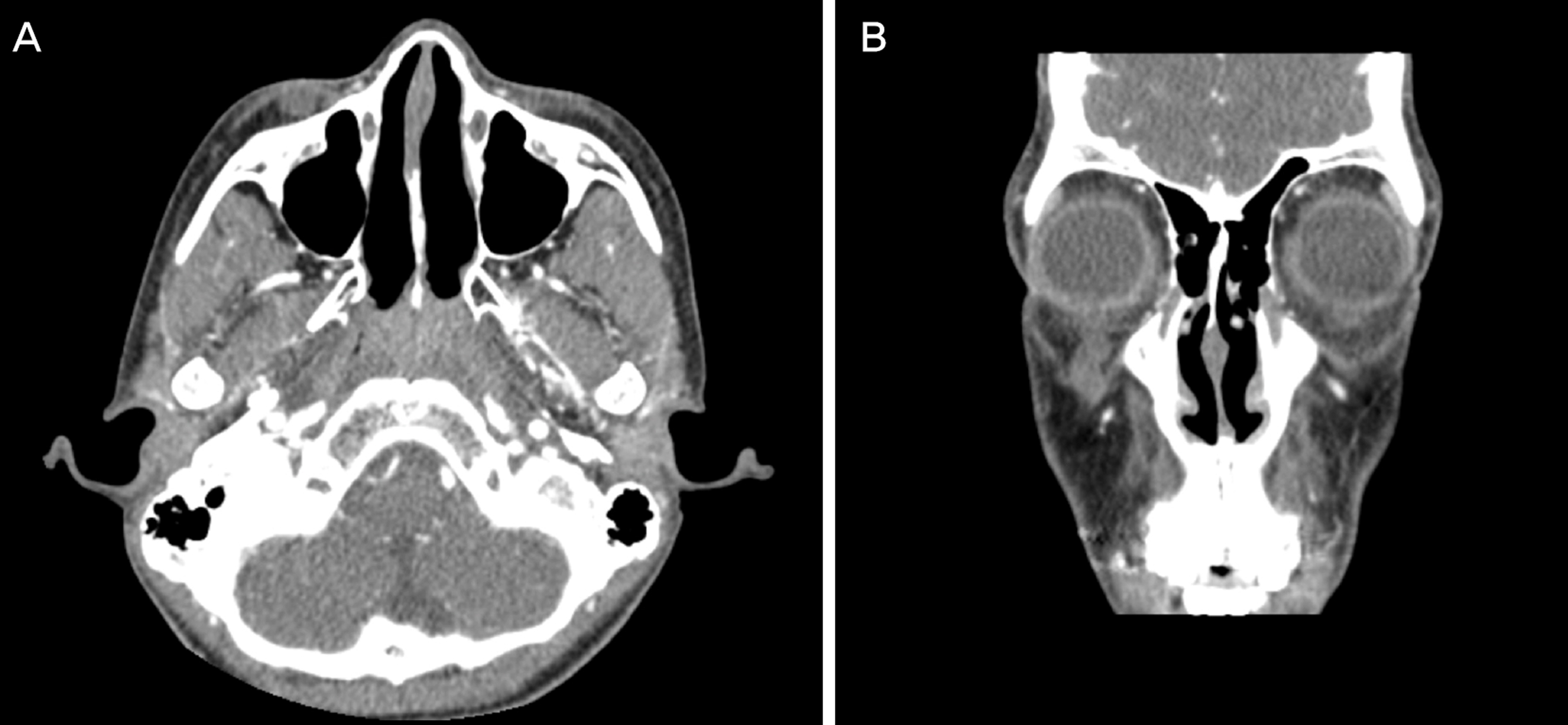Abstract
Purpose
Solitary plexiform neurofibroma of the eyelid without neurofibromatosis is a rare disease. We report a case of solitary plexiform pigmented neurofibroma of the eyelid without neurofibromatosis.
Case summary
A 12-year-old male visited our clinic with a painless palpable subcutaneous mass on the right lower eyelid. He had a history of Batter syndrome and attention deficit hyperactivity disorder. On initial presentation, clinical features regarding neurofibromatosis such as Lisch nodule, optic nerve glioma, or high myopia were not observed. We performed excision and bi-opsy of the lower lid mass under general anesthesia. Macroscopically, the tumor was 4.0 x 1.5 x 1.5 cm in size with irregular nodules. Microscopically, the tumor consisted of multiple, variably sized tortous enlarged nerve fascicles with clusters of pig-mented cells. Immunohistochemical results revealed expression of S-100 protein. Pigmented cells express both S-100 and mel-an-A proteins, while nonpigmented cells express S-100 protein only. The tumor was finally diagnosed as plexiform pigmented neurofibroma. Dermatological evaluation revealed no evidence of systemic neurofibromatosis.
References
1. Song BR, Yoo JH. Solitary neurofibroma in orbit. J Korean Ophthalmol Soc. 1990; 31:525–8.
2. Arigon V, Binaghi M, Sabouret C. . Usefulness of systematic ophthalmologic investigations in neurofibromatosis 1: a cross-sec-tional study of 211 patients. Eur J Ophthalmol. 2002; 12:413–8.

3. Bechtold D, Hove HD, Prause JU. . Plexiform neurofibroma of the eye region occurring in patients without neurofibromatosis type 1. Ophthal Plast Reconstr Surg. 2012; 28:413–5.

4. Jung JW, Lee JH, Shyn KH, Chi MJ. A case of plexiform neuro-fibroma with severe ptosis and proptosis. J Korean Ophthalmol Soc. 2007; 48:725–30.
5. Schaffer JV, Chang MW, Kovich OI. . Pigmented plexiform neurofibroma: Distinction from a large congenital melanocytic nevus. J AM Acad Dermatol. 2007; 56:862–8.

6. Huang W, Chong WS. Facial plexiform neurofinorma: is it truly just skin deep? BMJ Case Rep 2013. 2013; (pii):bcr2013200716.
7. Shi L, Liu FJ, Jia QH. . Solitary plexiform neurofibroma of the stomach: a case report. World J Gastroenterol. 2014; 20:5153–6.

8. Rong AJ, Ledgerwood LG, Jin LW, Tollefson TT. Solitary plexi-form neurofibroma of the forehead: A rear and unusual presentation. Int J Pediatr Otorhinolaryngol Extra. 2014; 9:15–7.
Figure 2.
Enhanced Orbital computed tomography. Images showed about 3.8 × 1.5 × 1.5 cm sized non-enhanced cystic lesion at subcutaneous tissue of the right lower lid and focal skin thickening. (A) Axial view. (B) Coronal view.

Figure 3.
The patient underwent surgical resection of the tumor. (A) Photomicrograph of plexiform pigmented neurofibroma (Hematoxylin-eosin, original magnification ×40). Multiple, variable sized tortuous hypertrophic nerves. (B) High power photo-micrograph of plexiform pigmented neurofibroma (Hematoxylin-eosin, original magnification ×200). Clusters of melanin pig-mented cells surrounding hypertrophied nerve of neurofibroma. (C) High power photomicrograph (S-100, original magnification ×200). Pigmented and nonpigmented tumor cells expressing S-100 protein. (D) High power photomicrograph (Melan-A, original magnification ×200) Pigmented cells with strong immunoreactivity for Melan-A, in contrast to nonpigmented cells.





 PDF
PDF ePub
ePub Citation
Citation Print
Print



 XML Download
XML Download